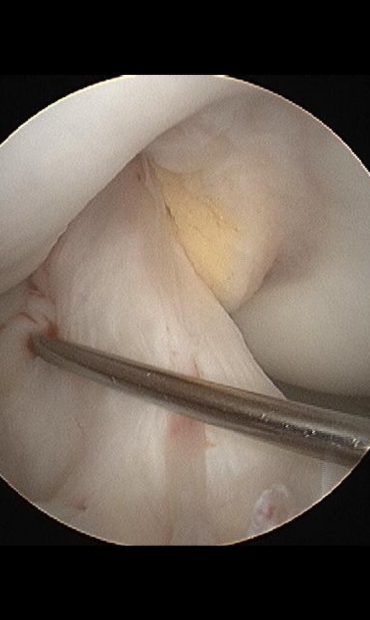
Knee Arthroscopy
Knee arthroscopy is a specialized surgical procedure used to diagnose and treat various conditions affecting the knee joint. The knee is a complex hinge joint that plays a crucial role in supporting body weight, facilitating movement, and absorbing impact during activities such as walking, running, and jumping. Knee arthroscopy involves the insertion of a small camera, known as an arthroscope, into the knee joint through small incisions. This allows surgeons to visualize the internal structures of the knee in real-time and perform targeted interventions with minimal invasiveness.
Get in touch
Types of Knee Arthroscopy

ACL Repair & Reconstruction

PCL Repair & Reconstruction

MCL Repair & Reconstruction

LCL Repair & Reconstruction
ACL Repair & Reconstruction
Anterior Cruciate Ligament (ACL) repair and reconstruction are surgical procedures intended to address injuries or tears to the ACL, a vital ligament in the knee that provides stability. These procedures aim to restore knee stability, alleviate pain, and enable individuals to return to activities requiring dynamic knee movements.
Residents in Visakhapatnam, Andhra Pradesh seeking ACL treatment can benefit from advanced care and competitive ACL reconstruction surgery costs.
Benefits:
Knee Stability Restoration: ACL repair and reconstruction are performed to restore stability to the knee joint, crucial for activities involving cutting, pivoting, and sudden changes in direction.
Alleviation of Pain: Addressing the injured ACL typically results in pain relief associated with the damaged ligament, improving comfort during daily and athletic activities.
Prevention of Abnormal Knee Movement: These procedures help prevent abnormal rotational or forward-backward movements in the knee joint, reducing the risk of further injury or instability.
Accelerated Natural Healing: ACL repair involves suturing the torn ligament ends back together, promoting natural healing processes and preserving the ligament’s integrity.
In summary, ACL repair and reconstruction are surgical interventions designed to address injuries to the ACL, providing benefits such as restored knee stability, pain alleviation, and the prevention of long-term joint damage. These procedures are particularly relevant for individuals with moderate to severe ACL injuries or cases where conservative treatments prove insufficient.
PCL Repair & Reconstruction
Posterior Cruciate Ligament (PCL) repair and reconstruction are surgical procedures intended to address injuries or tears to the PCL, a crucial ligament in the knee that provides stability. These procedures aim to restore knee stability, alleviate pain, and enable individuals to resume regular activities.
Benefits:
Knee Stability Restoration: PCL repair and reconstruction are performed to restore stability to the knee joint, particularly in preventing posterior translation of the tibia in relation to the femur.
Alleviation of Pain: Addressing the injured PCL typically results in pain relief associated with the damaged ligament, improving comfort during daily activities and physical movements.
Prevention of Abnormal Knee Movement: These procedures help prevent abnormal posterior movement of the tibia in relation to the femur, reducing the risk of further injury or instability.
Accelerated Natural Healing: PCL repair involves suturing the torn ligament ends back together, promoting natural healing processes and preserving the ligament’s integrity.
In summary, PCL repair and reconstruction are surgical interventions designed to address injuries to the PCL, providing benefits such as restored knee stability, pain alleviation, and the prevention of long-term joint damage. These procedures are particularly relevant for individuals with moderate to severe PCL injuries or cases where conservative treatments prove insufficient.
MCL Repair & Reconstruction
Medial Collateral Ligament (MCL) repair and reconstruction are surgical procedures intended to address injuries or tears to the MCL, a crucial ligament on the inner side of the knee that provides stability. These procedures aim to restore knee stability, alleviate pain, and promote optimal function.
Benefits:
Knee Stability Restoration: MCL repair and reconstruction are performed to restore stability to the inner side of the knee joint, particularly important for weight-bearing and rotational activities.
Alleviation of Pain: Addressing the injured MCL typically results in pain relief associated with the damaged ligament, allowing for improved comfort during daily activities.
Prevention of Abnormal Knee Movement: These procedures help prevent abnormal side-to-side movement in the knee joint, reducing the risk of further injury or instability.
Accelerated Natural Healing: MCL repair involves suturing the torn ligament ends back together, facilitating natural healing processes and preserving the ligament’s integrity.
In summary, MCL repair and reconstruction are surgical interventions designed to address injuries to the MCL, providing benefits such as restored knee stability, pain alleviation, and the prevention of long-term joint damage. These procedures are particularly relevant for individuals with moderate to severe MCL injuries or cases where conservative treatments prove insufficient.
LCL Repair & Reconstruction
Lateral Collateral Ligament (LCL) repair and reconstruction are surgical procedures aimed at addressing injuries or tears to the LCL, a key ligament on the outer side of the knee that provides lateral stability. These procedures are designed to restore knee stability, alleviate pain, and enhance overall joint function.
Benefits:
Knee Stability Restoration: LCL repair and reconstruction aim to restore stability to the outer side of the knee joint, particularly important for stability during weight-bearing activities.
Pain Alleviation: Addressing the injured LCL typically results in pain relief associated with the damaged ligament, improving comfort during daily activities.
Prevention of Abnormal Knee Movement: These procedures help prevent abnormal side-to-side movement in the knee joint, reducing the risk of further injury or instability.
Accelerated Natural Healing: LCL repair involves suturing the torn ligament ends back together, promoting natural healing processes and preserving the ligament’s integrity.
In summary, LCL repair and reconstruction are surgical interventions designed to address injuries to the LCL, providing benefits such as restored knee stability, pain alleviation, and the prevention of long-term joint damage. These procedures are particularly relevant for individuals with moderate to severe LCL injuries or cases where conservative treatments prove insufficient.
For individuals considering advanced knee treatments, Visakhapatnam, Andhra Pradesh offers access to the best knee replacement in India, ensuring exceptional care and outcomes.
Frequently Asked Questions
Knee arthroscopy is a minimally invasive surgical procedure used to diagnose and treat knee joint problems. Surgeons use a small camera, called an arthroscope, to view the knee’s interior and perform procedures through tiny incisions. This approach reduces recovery time and minimizes scarring compared to traditional open surgery.
Common conditions treated with knee arthroscopy include:
- Torn meniscus
- ACL (anterior cruciate ligament) injuries
- Loose cartilage or bone fragments
- Inflammation or swelling in the joint
- Damaged or misaligned knee caps
For severe ligament injuries like ACL tears, a more complex procedure called ACL reconstruction surgery may be necessary.
The cost of ACL reconstruction surgery varies depending on factors such as the surgeon’s expertise, hospital facilities, and the geographical location of the procedure. In India, ACL reconstruction surgery cost typically ranges between ₹1.5 lakhs to ₹3 lakhs, making it a cost-effective option for patients seeking high-quality treatment.
Recovery from knee arthroscopy depends on the condition treated and the patient’s overall health. Most patients can resume light activities within a few weeks, but full recovery, especially for sports or heavy physical activities, can take 2–3 months. Rehabilitation exercises and physiotherapy play a crucial role in regaining strength and mobility.
Knee arthroscopy is less invasive and primarily addresses specific issues within the knee joint. A full knee replacement, on the other hand, is recommended for severe arthritis or extensive joint damage. India is renowned for offering some of the best knee replacement procedures globally, combining skilled surgeons and advanced technologies at affordable rates.
As with any surgical procedure, there are potential risks, including infection, blood clots, or nerve damage. However, knee arthroscopy is generally considered safe, with a high success rate in alleviating pain and improving joint function.
Look for a surgeon with extensive experience in arthroscopic procedures. Researching patient reviews and the surgeon’s credentials is essential. Additionally, if you’re considering treatment in India, explore medical facilities known for providing comprehensive orthopedic care, including ACL reconstruction and knee replacement surgeries.
Knee arthroscopy is a highly effective and minimally invasive procedure for treating a range of knee problems. Whether you’re exploring options for ACL reconstruction or the best knee replacement in India, consulting a qualified orthopedic specialist will ensure optimal care and successful outcomes.
Conclusion
By utilizing knee arthroscopy, healthcare practitioners can offer effective solutions for knee-related problems, leading to improved outcomes and quicker recovery for patients experiencing knee joint issues. This advanced technique has become a standard approach in managing a variety of knee conditions, providing both diagnostic clarity and targeted interventions.



